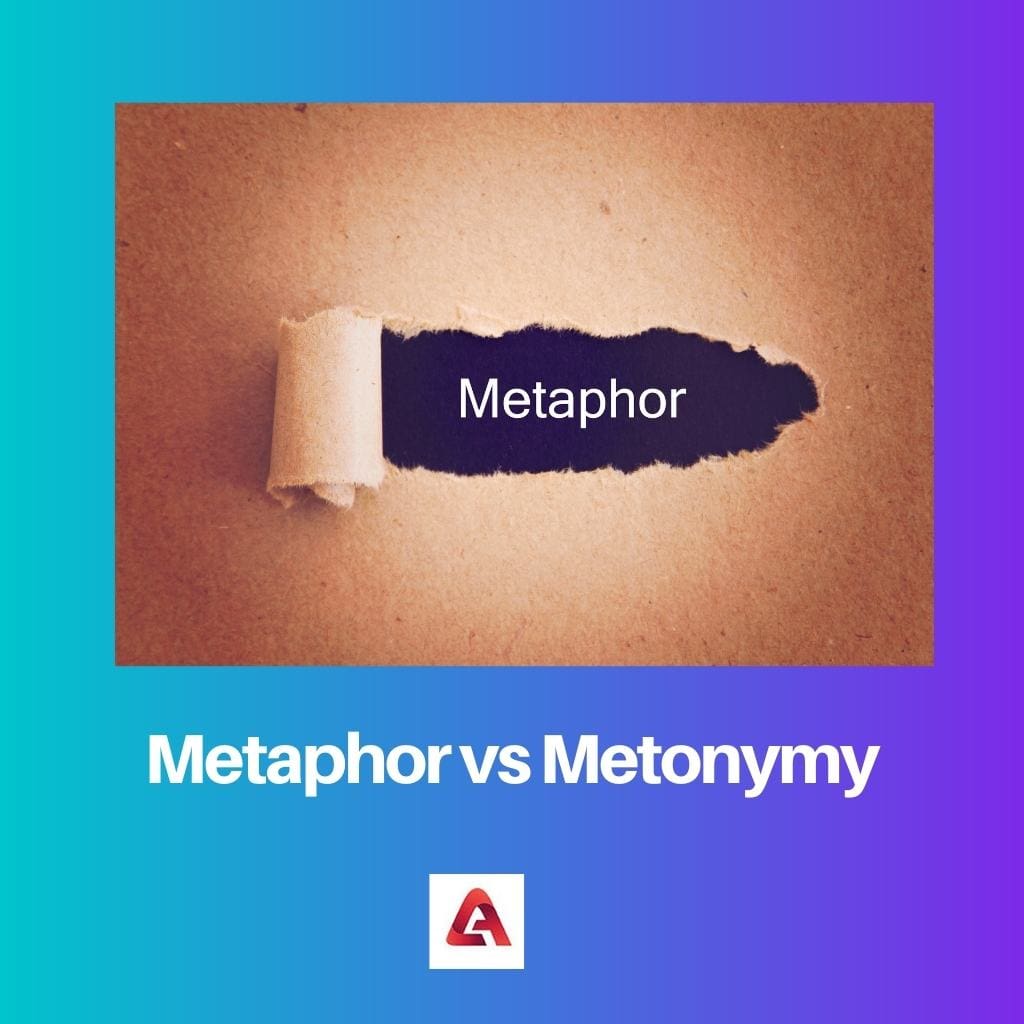A metaphor and metonymy are the two types of figures of speech. Both are used in various forms of writing them more creative and beautiful. However, they are misused in each other’s places due to their little difference.
Key Takeaways
- A metaphor is a figure of speech used to compare two things that are not alike, to create a vivid image in the reader’s mind.
- Metonymy is a figure of speech that uses a word or phrase to refer to something closely related, such as using “the White House” to refer to the US government.
- While metaphor and metonymy are used in language to create imagery and convey meaning, they differ in their approach and purpose.
Metaphor vs Metonymy
A metaphor is a figure of speech that describes something by stating it is something else; it involves comparing two things directly. A metonymy is a figure of speech in which a word is replaced by another word closely associated with it but not necessarily a part of it.

A metaphor is a figure of speech described as a word used to express another specific word. Metaphors are utilised in poetries, literature, songs, etc. however; sometimes people confuse metaphor with a simile.
An example of a metaphor is ” chaos is a friend”. Here the word chaos is used as a metaphor for troubling times.
A metonymy is a figure of speech described as a similar word used to describe a particular word. It is famously used in the writing of dialogues and songs. It is derived from the Greek word “metonymia”, meaning ‘change of word’. People relate metonymy with synecdoche.
Comparison Table
| Parameters of Comparison | Metaphor | Metonymy |
|---|---|---|
| Description | A word that is used to express some other specific term | Gives a different type of name to a specific word. |
| Origin | The metaphor comes from the Greek word “metaphora” meaning carry over. | Metonymy comes from the Greek word “metonymia”, meaning a change of word. |
| Uses | A metaphor is used for the substitution of two words. | Metonymy is used for the association of the two words. |
| Uses in different fields | Used in poetries, music, literature, speeches, etc. | Used in writing the movie dialogues, poetries, songs, etc. |
| Examples | Kisses are the flowers of affection. | Silicon Valley used to refer to the tech industry. |
What is Metaphor?
A metaphor can be described as a word used to express some other specific term, or we can also say that it is used as a symbol of something. It is a figure of speech.
Metaphors are used in poetries, music, literature, speeches, etc. They can make simple writing way more creative, beautiful and descriptive.
It can make someone’s writing more imaginary and make complex writing look easy and reliable. People use metaphors to describe their views creatively.
When people use a metaphor to describe something, they sometimes use ‘metaphorically speaking’. This phrase is a way to let others know that they should not take that word for its real meaning. For example, ” love is blind “; here, the word blind is not used for its actual meaning.
A metaphor is confused with a simile. There are different types of metaphor, like the implied metaphor, the sustained metaphor and the dead metaphor. Each of these types has its uses in various segments of writing like the sustained metaphor is used in poetries and songs.
Some famous examples are: “Chaos is a Friend” by Bob Dylan, “A good conscience is a Continual Christmas” by Benjamin Franklin, etc.

What is Metonymy?
Metonymy is a figure of speech. It is used to define something closely associated with it. In brief, it gives a different type of name to a specific word being discussed. The word metonymy is said to be derived from the Greek word “metonymia”, meaning ‘change of word’.
A metonymy enables writers to use different words to describe something instead of standard terms. This helps them to make their writings more aesthetically creative. It makes them express their expressions and imaginations more descriptively.
Metonymy is famously used in writing movie dialogues, poetries, songs, etc. since it makes them sound more creative and descriptive. Metonymy is said to relate closely to synecdoche, a poetic device.
Some examples of metonymy are “Hollywood”, which is used to describe the film industry, “Academics”, “Management”, and many more.

Main Differences Between Metaphor and Metonymy
- A metaphor uses another type of word to describe a particular word, whereas metonymy uses a related term to describe a specific word.
- A metaphor is used for the substitution of two words. In contrast, metonymy is used for the association of the two words.
- A metaphor is used to make writing more creative and beautiful. At the same time, metonymy is used to make the script use different kinds of words rather than the usual common words to make it more descriptive.
- The metaphor comes from the Greek word “metaphora” meaning carry over. On the other hand, metonymy comes from the Greek word “metonymia”, meaning a change of word.
- Examples of a metaphor are ‘ love is blind’, and the snow is a white blanket. At the same time, examples of metonymy are ‘Crown’, which describes a place of a royal person, ‘Suits’, referring to business people, etc.




